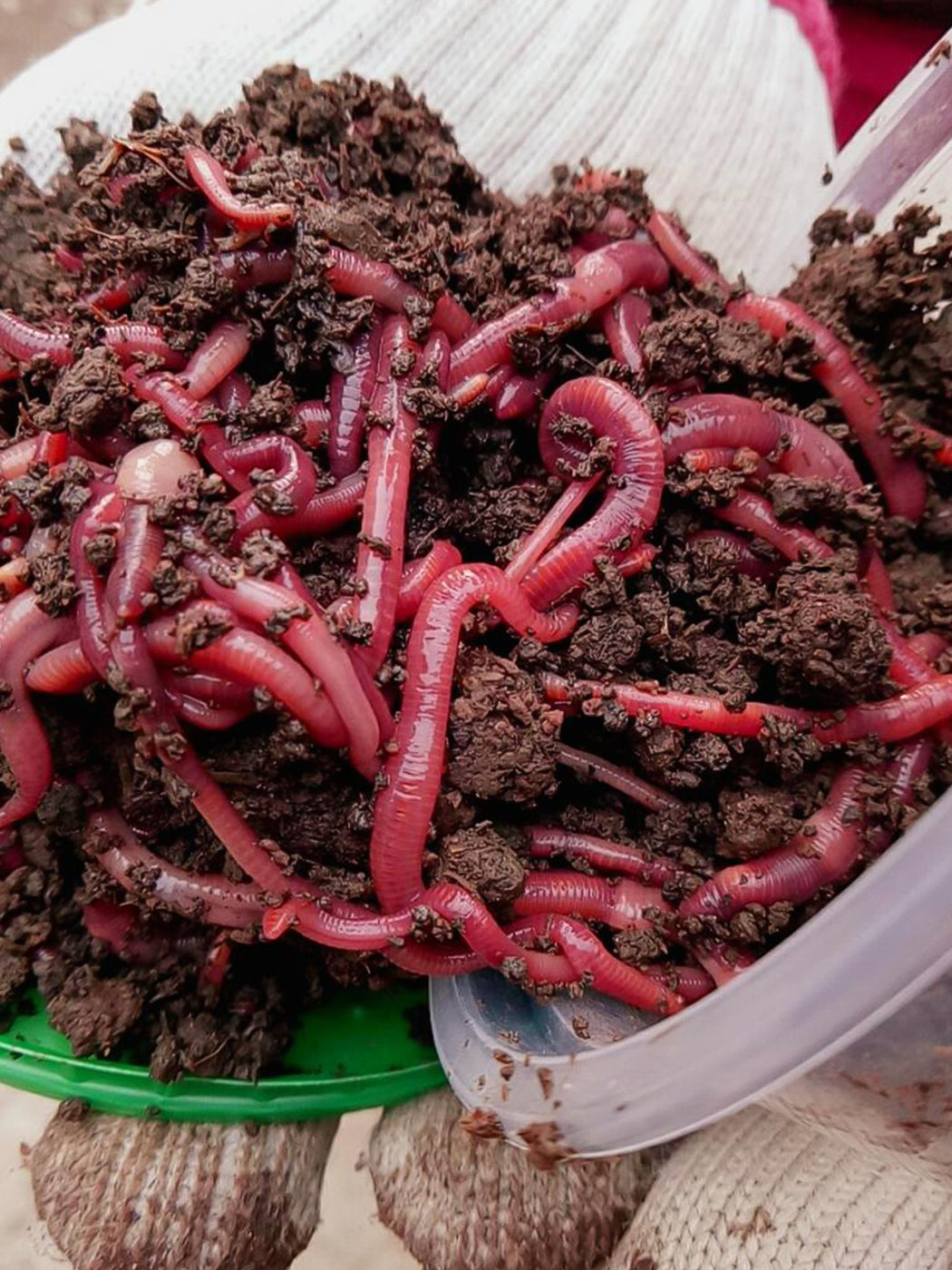Unlock the Secrets of Red Wigglers: Your Guide to Composting Success
The assimilation of red wigglers right into composting practices offers a significant chance for boosting soil health and wellness and promoting sustainability. Understanding their demands and behaviors is vital for maximizing their possibility, from setting up a proper worm bin to feeding them the appropriate products.

What Are Red Wigglers?
Native to North America, they are usually discovered in decaying fallen leaves and compost heap, where they play a vital function in nutrient recycling. Their adjustment to staying in a moist, aerobic setting enables them to take in huge amounts of organic waste, damaging it down right into nutrient-rich castings that enhance dirt wellness.
Red wigglers replicate rapidly, with a single worm capable of producing a number of cocoons each week, each having multiple hatchlings. Comprehending the biology and habits of red wigglers is vital for maximizing their capacity in composting applications.
Advantages of Making Use Of Red Wigglers
Harnessing the power of red wigglers in composting uses numerous benefits that improve dirt wellness and promote sustainable waste administration. These exceptional microorganisms efficiently damage down raw material, transforming cooking area scraps and lawn waste right into nutrient-rich vermicompost. This completed product is remarkably beneficial for plant growth, as it boosts soil framework, enhances dampness retention, and enhances vitamins and mineral schedule.

Setting Up Your Worm Bin
Developing an effective worm container is a simple procedure that can significantly enhance your composting initiatives. The initial action is selecting a suitable container. Worm bins can be made from plastic storage space containers, wooden boxes, or readily readily available worm bins. Make sure the container has appropriate drain and ventilation holes to preserve ideal dampness levels and air flow.
Following, prepare the bed linen product, which offers as the worms' environment. A mix of shredded newspaper, cardboard, and coconut coir functions well, supplying a comfy atmosphere for the worms. Purpose for a bed linen depth of regarding 4-6 inches. Dampen the bedding gently, guaranteeing it resembles a damp sponge without excess water pooling near the bottom.

Feeding Your Red Wigglers
To guarantee the health and performance of your red wigglers, it is important to offer them with a balanced diet plan that meets their dietary needs. Red wigglers grow on a varied variety of organic products, which not only supply necessary nutrients however also advertise efficient composting.
Beginning by incorporating kitchen scraps such as vegetable peels, fruit cores, and coffee premises. Avoid citrus fruits, onions, and garlic, as these can be damaging to worm health. In addition, introduce shredded paper, cardboard, and completely dry fallen leaves to produce a well-aerated setting.
Feeding regularity ought to be checked; typically, worms can eat half their body weight in food weekly. It is important to stay clear of overfeeding, as excess food can result in undesirable smells and attract bugs. A good method is to add food in percentages, allowing worms to process it prior to presenting more.
Preserving dampness degrees is also essential; the bedding ought to be wet yet not soggy. Finally, make sure to regularly inspect the temperature and pH levels of the container to guarantee an optimum setting for your red wigglers, inevitably boosting their composting performance.
Harvesting and Making Use Of Garden Compost
An effective composting procedure with red wigglers culminates in the abundant, dark compost referred to as vermicompost, which can significantly improve soil wellness and plant growth. Collecting this nutrient-dense material generally takes place every 3 to 6 months, depending upon the size of your system and the amount of raw material being refined.
To gather, gently different the compost from the worms and any type of undecomposed materials. One reliable technique entails relocating the materials of the container away and adding fresh bed linens and food to the void, encouraging the worms to migrate. After a couple of days, the compost can be collected from the contrary side.
It is necessary to make use of vermicompost properly to optimize its advantages. It can be used as a leading clothing for garden beds, blended into potting soil, or brewed into a nutrient-rich liquid plant food known as "worm tea." This application technique assists to provide vital nutrients straight to plant origins, advertising healthier growth. By incorporating vermicompost into your horticulture program, you not only reuse organic waste but also create a flourishing ecosystem that sustains lasting horticulture techniques.
Verdict
In recap, red wigglers work as extraordinary allies in composting initiatives, changing natural waste useful link right into nutrient-rich vermicompost (Red Wiggler Express). Their special organic features and reliable waste processing capabilities add dramatically to lasting gardening techniques. By recognizing the optimum conditions for their environment, feeding needs, and garden compost harvesting techniques, gardeners can boost soil wellness and promote plant vigor. Accepting vermicomposting not just minimizes landfill waste however additionally promotes a more environmentally accountable strategy to gardening and resource management.
Comments on “Discover Why Lake Hickory Bait is the Best Choice for Grass Treatment”